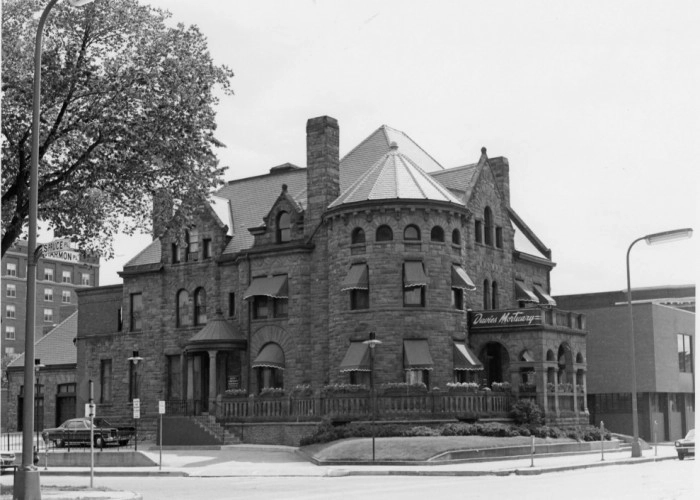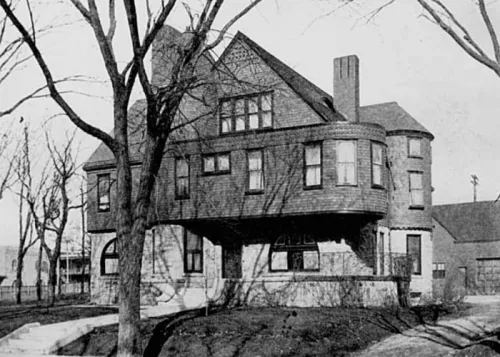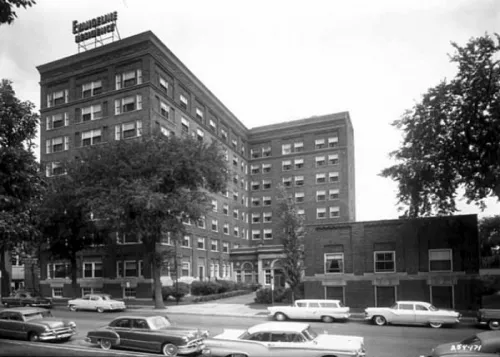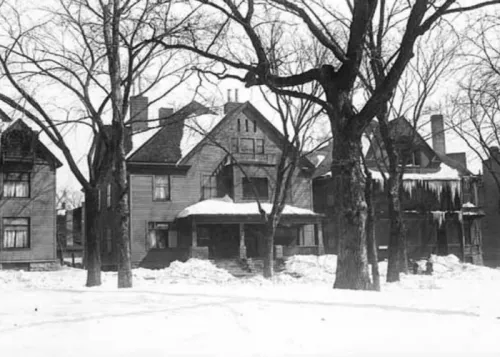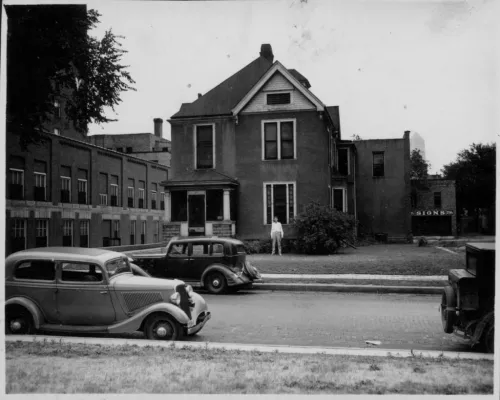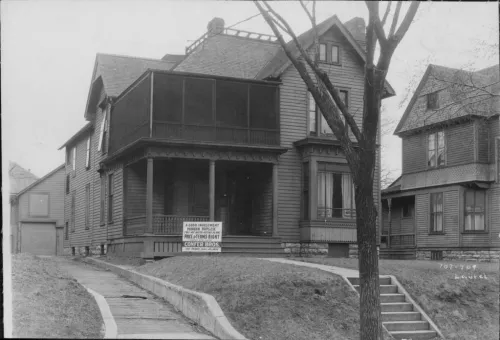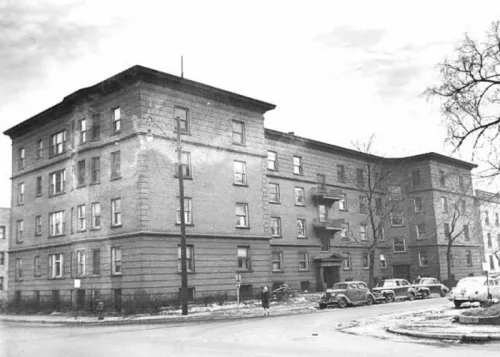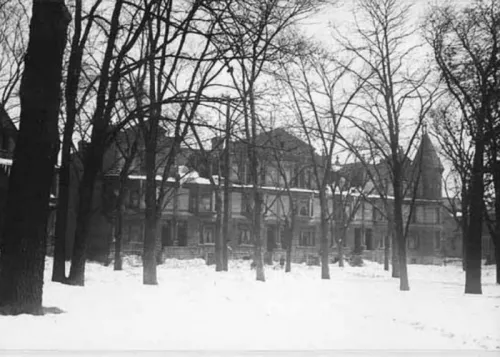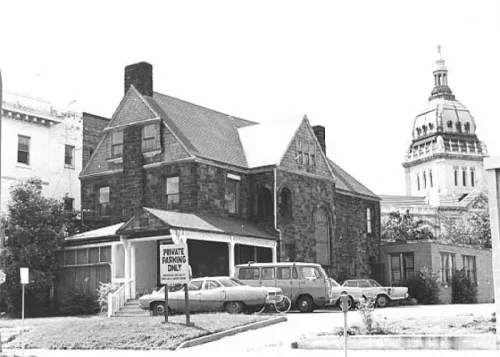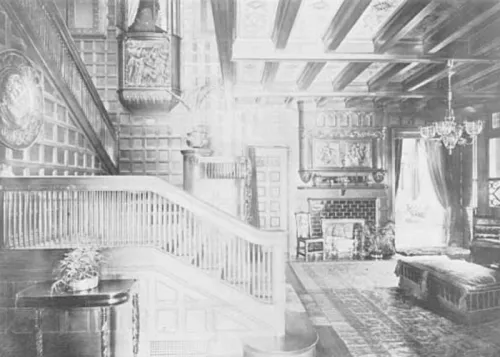Share what you know,
and discover more.
Share what you know,
and discover more.
Sep 26, 1991
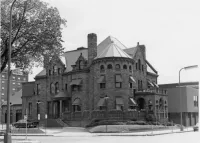
-

- Charmaine Bantugan
Alden H. Smith House (Davies Mortuary) - National Register of Historic Places
STATEMENT OF SIGNIFICANCE The H. Alden Smith House, with its fine stone masonry, round arched windows, and gabled, hipped roof, is an excellent example of Richardsonian'Romanesque architecture. The architectural work of Henry Hobson Richardson, who is recognized as one of the three greatest American-born architects, had a significant impact on the architecture of Minneapolis during the 1880s and 1890s; and the H. Alden Smith House is one of the finest examples of domestic architecture of this design in the city. Designed in 1887 by one of Minneapolis' most prominent architects, William Channing Whitney this house is a fine example of his work as well as the Richardsonian Romanesque style. For William Channing Whitney gained his architectural reputation from his ability to design buildings which followed popular trends, not from his original talents. Architectural historian Donald Torbert, speaking of Whitney's design for the H. Alden Smith House says the following: "The design was in no sense a copy, but Richardson's works provided the authority for the individual motifs and for their combination. The Palladian-like openings of the gables and porch are historically out of character with the squatty tower, rock faced walls, and asymmetrical plan, but stem from a similar use of the Palladian motif on the Pain House at Waltham, Massachusetts which the Richardson office designed in 1884-86." The house bears the name of the man who had it built, H. Alden Smith, a wealthy Minneapolis businessman. Smith earned his wealth as co-owner of the Smith 6eWyman Sash and Door Company. He had his home built on Harmon Place, one of Minneapolis' most fashionable addresses around the turn of the century. Today it is the only one of the mansions built there that survives shedding light on the history of residential building patterns in Minneapolis. The H. Alden Smith House is thus an architecturally significant building in Minneapolis. It is a fine example of the Richardsonian Romanesque style. It illustrates well the influence of this style upon local architecture during the late 1800s and William Channing Whitney's ability to adapt Richardson's designs. 1. Donald R. Torbert, Minneapolis Architecture and Architects 1848-1908. Ph.D, Thesis, May 1951.
Alden H. Smith House (Davies Mortuary) - National Register of Historic Places
STATEMENT OF SIGNIFICANCE The H. Alden Smith House, with its fine stone masonry, round arched windows, and gabled, hipped roof, is an excellent example of Richardsonian'Romanesque architecture. The architectural work of Henry Hobson Richardson, who is recognized as one of the three greatest American-born architects, had a significant impact on the architecture of Minneapolis during the 1880s and 1890s; and the H. Alden Smith House is one of the finest examples of domestic architecture of this design in the city. Designed in 1887 by one of Minneapolis' most prominent architects, William Channing Whitney this house is a fine example of his work as well as the Richardsonian Romanesque style. For William Channing Whitney gained his architectural reputation from his ability to design buildings which followed popular trends, not from his original talents. Architectural historian Donald Torbert, speaking of Whitney's design for the H. Alden Smith House says the following: "The design was in no sense a copy, but Richardson's works provided the authority for the individual motifs and for their combination. The Palladian-like openings of the gables and porch are historically out of character with the squatty tower, rock faced walls, and asymmetrical plan, but stem from a similar use of the Palladian motif on the Pain House at Waltham, Massachusetts which the Richardson office designed in 1884-86." The house bears the name of the man who had it built, H. Alden Smith, a wealthy Minneapolis businessman. Smith earned his wealth as co-owner of the Smith 6eWyman Sash and Door Company. He had his home built on Harmon Place, one of Minneapolis' most fashionable addresses around the turn of the century. Today it is the only one of the mansions built there that survives shedding light on the history of residential building patterns in Minneapolis. The H. Alden Smith House is thus an architecturally significant building in Minneapolis. It is a fine example of the Richardsonian Romanesque style. It illustrates well the influence of this style upon local architecture during the late 1800s and William Channing Whitney's ability to adapt Richardson's designs. 1. Donald R. Torbert, Minneapolis Architecture and Architects 1848-1908. Ph.D, Thesis, May 1951.
Sep 26, 1991
Alden H. Smith House (Davies Mortuary) - National Register of Historic Places
STATEMENT OF SIGNIFICANCEThe H. Alden Smith House, with its fine stone masonry, round arched windows, and gabled, hipped roof, is an excellent example of Richardsonian'Romanesque architecture. The architectural work of Henry Hobson Richardson, who is recognized as one of the three greatest American-born architects, had a significant impact on the architecture of Minneapolis during the 1880s and 1890s; and the H. Alden Smith House is one of the finest examples of domestic architecture of this design in the city.
Designed in 1887 by one of Minneapolis' most prominent architects, William Channing Whitney this house is a fine example of his work as well as the Richardsonian Romanesque style. For William Channing Whitney gained his architectural reputation from his ability to design buildings which followed popular trends, not from his original talents. Architectural historian Donald Torbert, speaking of Whitney's design for the H. Alden Smith House says the following:
"The design was in no sense a copy, but Richardson's works provided the authority for the individual motifs and for their combination. The Palladian-like openings of the gables and porch are historically out of character with the squatty tower, rock faced walls, and asymmetrical plan, but stem from a similar use of the Palladian motif on the Pain House at Waltham, Massachusetts which the Richardson office designed in 1884-86."
The house bears the name of the man who had it built, H. Alden Smith, a wealthy Minneapolis businessman. Smith earned his wealth as co-owner of the Smith 6eWyman Sash and Door Company. He had his home built on Harmon Place, one of Minneapolis' most fashionable addresses around the turn of the century. Today it is the only one of the mansions built there that survives shedding light on the history of residential building patterns in Minneapolis.
The H. Alden Smith House is thus an architecturally significant building in Minneapolis. It is a fine example of the Richardsonian Romanesque style. It illustrates well the influence of this style upon local architecture during the late 1800s and William Channing Whitney's ability to adapt Richardson's designs.
1. Donald R. Torbert, Minneapolis Architecture and Architects 1848-1908. Ph.D, Thesis, May 1951.
Posted Date
Mar 10, 2022
Historical Record Date
Sep 26, 1991
Source Name
United States Department of Interior - National Park Service
Source Website
Delete Story
Are you sure you want to delete this story?
